If you constantly feel discomfort in the heel area, this is a serious reason to think about your health, because such a symptom often signals the presence of any diseases. In order to restore good health, it is important not only to eliminate painful sensations, but also to find out the cause of their occurrence.
Causes of heel pain
The feeling of discomfort can be caused by a variety of factors:
- Sports activities. Pain in the heel area sometimes occurs after jogging or other physical exercise, involving heavy loads.
- Injuries. Bruises, sprains, fractures or any other types of injuries can lead to acute pain. In this case, you must immediately contact a traumatologist. In order to avoid unpleasant consequences, it is better not to step on the sore leg.
- Inappropriate shoes. If you used to only wear heels and then start wearing flat shoes, this can have an adverse effect on the health of your feet.
- Excess weight. Because of overweight body, the load on the feet increases, as a result of which a person experiences severe pain while walking.
- Arthritis. Inflammation of the tissue connecting the heel bone and toes can lead to discomfort that will gradually intensify. With this disease, pain is especially intense in the morning.
- Fasciitis of the soles. Pathology can be provoked by tight, uncomfortable shoes or daily long standing on your feet. As a result, a growth forms on them, putting pressure on the tissues and evoking feeling discomfort, which is most strongly felt after sleep.
- Heel spur. If fasciitis is not treated in time, it may appear on the surface of the heel. bone formation, which will lead to severe pain, which will occur especially often in the morning.
- Inflammation or rupture of the Achilles tendon. Injury can occur as a result of intense physical activity, or, for example, from an unsuccessful jump.
- Infections. Inflammation of the tendon can be caused by infectious diseases, such as chlamydia. The disease is accompanied by constant pain, which becomes even stronger in the evening.
- Malignant tumors. If there are neoplasms on the feet, compression of blood vessels and nerve endings occurs, which in turn causes chronic pain.
- Cracks in the heels resulting from dermatitis, mycosis or some other disease.
How to get rid of heel pain
In order to eliminate unpleasant sensations, you first need to determine the cause of their occurrence by contacting a rheumatologist, traumatologist or dermatologist. Treatment can be carried out different ways, it is prescribed only after a complete diagnostic examination, including blood tests, x-rays and ultrasound.
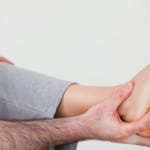
If you have cracked heels, you need to make an appointment with a dermatologist; if it turns out that they are affected by a fungus, he will prescribe the appropriate treatment. This problem can also be caused by excessive dry skin. To get rid of cracks, it is recommended to lubricate your feet with cream every day and remove keratinized areas with pedicure tools.
If the cause of discomfort is uncomfortable shoes, it is recommended to purchase products with a comfortable last that do not put a lot of stress on the heel. From time to time, you need to take off your shoes to give your feet a rest.
To treat heel spurs, it is necessary to take comprehensive measures:
- getting rid of excess body weight;
- physiotherapy (mineral baths, ultrasound treatment, mud applications);
- use of orthopedic insoles;
- reducing the load on the foot;
- drug treatment;
- surgical removal of bone growth (in especially serious cases).
In the presence of inflammatory processes caused by infectious diseases or joint diseases, medications are used that are prescribed to the patient by a doctor.
You can alleviate the condition of plantar fasciitis by reducing physical exercise, for example, by giving up sports such as walking or running. In addition, it is recommended to do special exercises every morning:
- Place a rolling pin under your feet and take sitting position and roll it over using a step for several minutes. In order to achieve the desired effect, repeat the procedure several times daily.
The cause of discomfort is often associated with low mobility calf muscles. You can get rid of this unpleasant symptom using the following exercise:
- Stand near a wall, place your palms against it, straighten your right leg, and step forward with your left. Then lean towards the wall, remaining in this position for half a minute. After this, repeat all the steps, changing legs.
How to quickly get rid of heel pain
The following methods will help alleviate the condition:
- If there are no medical contraindications, take ice, apply it to your feet, and then rub them. It is recommended to perform this procedure once daily, for twenty minutes.
- Get rid of painful sensations You can steam your feet in a basin of warm water.
- Painkillers containing ibuprofen have a quick effect. However, before you start taking them, you should consult your doctor.
- Pain in the heel area is well relieved by anti-inflammatory ointments (butadiene, indomethacin).
You can get rid of the problem by using proven folk remedies:
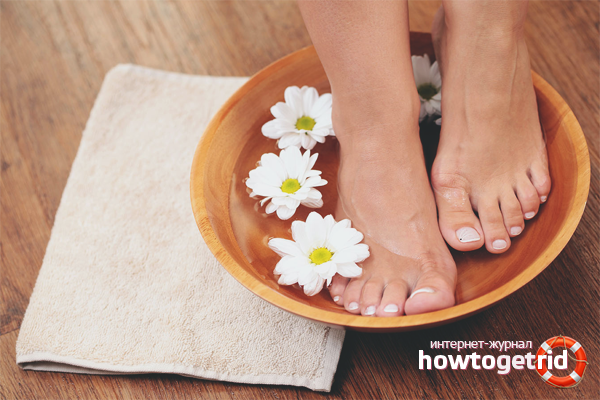
- Grate raw potatoes, apply it to your leg and wrap it on top with polyethylene. This recipe allows you to quickly relieve pain.
- Plantain helps get rid of heel spurs. Apply the sheet to the affected area, and as soon as it dries, replace it with a new one. After this procedure, severe pain may appear, but in the future, you will be able to forget about the existence of bone growths.
- Black radish is well suited for treatment; it needs to be finely rubbed, applied to the heel and wrapped in polyethylene. In the morning, the puree should be washed off with warm water.
- If you have “Triple Cologne” at home, you can heat it in an enamel container and then steam your feet in it.
- Garlic has an excellent healing effect; puree it and apply it to your heel for four hours. By doing such compresses daily, you can soon get rid of the feeling of discomfort.
- Crush two aspirin tablets, mix them with a spoon of 3% iodine, apply the composition to cotton wool, and then apply it to the sore spot, wrap it up plastic film and a warm towel. Repeat this procedure at least three times a day.
Taking advantage folk recipes, you can get rid of painful sensations on your own at home, but before starting treatment, you must first consult with a specialist.
How to avoid heel pain
- Excess weight often causes increased stress on the feet, so you need to maintain it at normal levels by watching your diet. It is recommended to give special preference to protein and plant foods, since pain in the heel area is often provoked by inflammatory processes resulting from metabolic disorders.
- You can avoid overstraining your feet by purchasing comfortable shoes with low heels, which will evenly distribute the load.
- Orthopedic insoles will help provide heel protection, thanks to which the foot ligaments and muscles are supported.
- For preventive purposes, you can perform special exercises daily to prevent leg diseases.
In order to solve the problem it is necessary to apply comprehensive measures. Treatment may take several months, however, by taking care of your health and following all the recommendations of doctors, you will eventually be able to completely get rid of the sensations that bother you.
Video: why does heel pain appear, and is it always a heel spur?
Almost every person has felt heel pain at least once in their life. Treatment is not carried out immediately and not always. In most cases, people try not to notice pain and discomfort.
Doctors do not welcome such an irresponsible attitude to the situation and advise seeking professional help as quickly as possible. Problems can turn into serious problems when walking, so it is important to determine the location of the pain and prescribe timely therapy.
The heel, the basis of which is the fat lining and the heel bone, performs the leading function of shock absorption when walking or running. Moreover, in the heel there are a huge number of intertwined capillaries along with nerve endings. All these features make the heel a rather sensitive area, almost an Achilles heel.
Considering the entire list of symptoms, in addition to heel pain, you need to contact different doctors, for example:
- oncologist,
- orthopedist,
- neurologist,
- surgeon,
- phthisiatrician.
What causes pain
Medical statistics show that pain in the heel area when walking or in the morning is directly related to plantar fasciitis, that is, a tear or inflammation of the connective tissue fibers.
When the cause of the pain is a heel spur, the pain is often accompanied by a tingling sensation in the morning. In addition, rheumatoid arthritis can be a source of foot pain.
The following are the causes of foot pain:
- heel bone diseases,
- calcaneal paratendinitis, when pain is felt in the deep layers of the heel tendon,
- violation of the heel pad with pain in the lower heel area,
- heel tendon rupture
- posterior calcaneal bursitis, which is a compaction of the bursa bursa,
- plantar fasciitis, where pain is in the anterior area of the heel bone.
As a rule, those who are prone to excess weight, pain most often appears in the heel area, because excess body weight puts a significant burden on the lower limbs. Discomfort appears in the feet due to flat feet and problems with various parts of the spine.
As a rule, fasciitis is observed in middle-aged and elderly people, but in last decades the disease is seriously “younger” due to poor ecology, stress and products of insufficient quality.
If a feeling of discomfort appears in one of the stages, then the cause may be inflammation of the sciatic nerve. This occurs due to metabolic disorders nutrients, and joints and bones become vulnerable.
If your heel hurts in the morning, the reasons are as follows:
- tendon injury
- bone bruise
- overload of the foot due to flat feet and much more.
In addition, infectious causes are distinguished:
- chlamydia,
- gonorrhea,
- other diseases.
There are often cases when heel pain is a consequence of chronic joint pathology. This can only be known after carrying out appropriate tests.
How to treat heel pain
 If you experience symptoms of fasciitis or other similar pathologies that cause heel pain, you should never treat it yourself. In any case, this will negatively affect the person’s condition.
If you experience symptoms of fasciitis or other similar pathologies that cause heel pain, you should never treat it yourself. In any case, this will negatively affect the person’s condition.
Do not hesitate to visit the clinic. To determine the correct diagnosis, it is enough to consult with an orthopedist, rheumatologist or arthrologist.
Considering what causes the pain in the heels, treatment should be carried out accordingly.
Therapy for a sore heel is a long-term process that requires strict adherence to all doctor’s recommendations.
Non-drug ways to treat heel pain
If you have complaints of heel pain, it is quite easy to figure out what causes this discomfort. But provided that the pain is not caused by a rupture of the Achilles tendon and a disease of the heel bone.
You can treat heel pain without medication:
- ice massage, which is replaced by heating. In the first few days after the onset of pain, doctors recommend performing this massage 3-4 times a day. The massage lasts about 7 minutes, until the heel becomes numb. You can apply ice to the affected area once a day for 15 minutes. After this, you should pause for 15 minutes, and then put a hot heating pad on the sore area for another 15 minutes.
- thrust bearings and instep supports. You can buy these items at the pharmacy, which ease the body's load on the affected area; the heel is also protected from external influences.
Considering that there are many types of thrust bearings, an orthopedic surgeon should help you choose. Special orthopedic insoles reduce symptoms and facilitate the treatment process, protecting against mechanical damage to the foot when walking.
- Increase the heel lift in the shoe. It is necessary to raise and leave the heel in the shoe in this position to reduce the load on it. For this purpose, a heel insert is used, which is placed in everyday shoes. The insert raises the heel up to 0.6 cm and helps relieve pain,
- Knead the heel with a massage. Lack of elasticity of the connective fibers in the heel area can cause pain. Tendons should be thoroughly kneaded regularly. Sometimes the doctor recommends massage as the main treatment,
- Do foot exercises in the morning. You need to stand near the wall and rest your palms against it, with your hands shoulder-width apart. Bend your left leg at the knee and take a step with your right foot. Lean towards the wall and keep your right heel on the floor for about 10 seconds. The complex consists of 10 approaches for each heel. It is necessary to pay attention that the load on the heel must be balanced, without strong pressure and sudden movements,
- Choose the right shoes. Comfortable shoes This is a guarantee of healthy feet and heels. When choosing shoes, you need to make sure that your feet are comfortable. The heel should not be higher than 0.8 -1.2 cm. During wear, the sole wears off; if the wear is already more than half, then the shoes are unsuitable for wear.
Treating Heel Pain with Medical Treatments
When a diagnosis of heel paratendinitis or spur is made, heel pain is relieved with local steroid injections.
If conservative treatment does not alleviate a person’s condition with posterior calcaneal bursitis, then the diseased bursa is removed during surgery.
To weaken the rapidly developing inflammatory process, you need to use non-steroidal anti-inflammatory drugs, for example, ibuprofen or a similar drug.
For rheumatoid arthritis, a rheumatologist or orthopedic doctor works with the problem of heel pain. As a rule, anti-inflammatory drugs and immunomodulators are prescribed. Sometimes surgery is necessary.
It is important to understand what formerly man with such a disease will begin treatment, the greater the likelihood of a positive outcome.
When a diagnosis of “heel spur” is made, treatment begins with the main action - complete rest of the sore leg and search for the root cause of the condition.
IN severe cases, when standard treatment is not effective, then the bone formation must be removed in the process surgical intervention. But, if a person is only worried about heel pain without aggravating circumstances, then you can get by with conservative treatment, rubbing in ointment, gel and other means.
As part of complex therapy, you can use:
- mud applications,
- mineral baths,
- injections of medications into the heel area.
If heel pain occurs in the morning, treatment begins with warming up the tendon and special exercises.
From the list medicines You should choose the “Golden Mustache and Sabelnik” balm, as well as the Contractubex anti-scarring gel.
If the drugs are used separately, they will not show a systemic effect and will not have an impact on the causes, but in combination the drugs are optimally combined with each other.
If treatment of heel pain with these balms is carried out in the early stages, then the discomfort is significantly reduced within the first day.
For complete blockade of pain, if the course of the disease is uncomplicated, it will take from 3 to 7 days. Before starting treatment with these drugs, you should find out the allergic reaction.
As a rule, Dolobena gel helps eliminate discomfort in the heel area. The product has a lot of positive reviews. Dolobene gel is applied to dry skin 2-4 times a day.
Help with folk remedies
To relieve pain caused by heel spurs, folk remedies use plants that have a strong anti-inflammatory effect. You can make ointments or tinctures from them.
For example, marsh plant not only effectively removes inflammation, but also normalizes the immune system, helping to remove salts from the body.
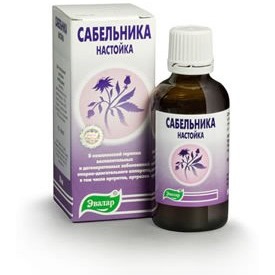 To prepare the medicine, you will need to take 1 tablespoon of cinquefoil tincture and dilute it in a third of a glass of water. The solution should be drunk before meals 3 times a day. The treatment course lasts 20 days, then you can take a 10-day break and resume treatment.
To prepare the medicine, you will need to take 1 tablespoon of cinquefoil tincture and dilute it in a third of a glass of water. The solution should be drunk before meals 3 times a day. The treatment course lasts 20 days, then you can take a 10-day break and resume treatment.
The list of folk remedies also includes a flatbread with oatmeal and honey, which has an analgesic effect. It is necessary to steam the affected leg well, wipe it and apply a cake, securing it with a bandage. This compress remains on the leg as long as possible. The course of treatment involves 10 procedures.
A special tincture made from walnuts perfectly relieves discomfort in the heel. The product is prepared with 20 grams of chopped nuts, which are poured with 200 ml of vodka.
The liquid should be infused for 10 days, after which 10% medicine is taken 1 tablespoon 3 times a day before meals. This treatment addresses discomfort in the heel.
Pain in the heels of the feet may be caused by various reasons. Such problems include:
1. – the most common reason pain;
2. The plantar fascia is a large band of dense formation that extends from the metatarsal bones to the heel bone. Fasciitis on the sole can be due to overuse of the foot. Heel pain when walking often occurs from shoes without heels;
3. Tendon injury. These problems can arise from high enough heels that put more stress on the tendons;
4. Bruises in the heel bone can also be a cause of heel pain. can lead to inflammation of nearby tissues;
5. Disorders of the Achilles tendon and its inflammation can cause severe pain above the heel;
6. The cause of pain in the heel may be infection(chlamydia, gonorrhea and others), which cause reactive inflammation of the heel;
7. Inflammation of the heel may be preceded by diseases such as inflammation of the joints and others. Pain in the heels of the feet may appear as a consequence of these diseases.
Treatment of heel pain with folk remedies
If you have pain in the heel area, you should not play sports. It is best to avoid running, jumping and carrying heavy objects. This can only lead to more serious problems.
It is best to choose special orthopedic shoes if serious problems with health and constant heel pain.
Pain in the heels of the feet can be removed by alternating heat and cold. This can be done using two bowls of cold and moderate hot water and take turns dipping your feet in cold water, then in warm water.
"Ice pillow" – filled finely crushed ice plastic bag small size. It is best to wrap an ice pad in a towel and apply it to sore heels. The procedure can last about fifteen minutes. An ice pack can be used after foot stress and training.
To steam your feet in a hot bath, you need to do the following: add two tablets of furatsilin and analgin, two tablespoons of apple cider vinegar and one tablespoon of honey to one liter of water. After twenty minutes of a hot bath, place a clay cake on your foot and wrap it with something. Keep it in this position until it starts to heat up. It is necessary to treat the heels with this method daily until the condition improves.
Tincture of cinquefoil alcohol. This is one of the common and popular treatments especially for heel spurs. The anti-inflammatory properties of cinquefoil can improve the condition. In addition, it removes salts from the body and strengthens the immune system.
Compresses with black radish are very helpful for heel pain. To do this, you must first wash the radish and grate it with a fine grater along with the skin. After this, put the pulp on a cloth, apply it to the heel, and put a plastic bag and a sock on top. Similar procedures should be done every day at night until the pain goes away.
In addition, it is necessary to increase blood circulation in the heel. You can tap your heel on the floor or rub your heels on your felt boots. Such procedures can destroy the heel spur.
Special massagers also help with heel spurs. They are convenient to use, for example, while watching TV and placing a massager under your heel, pressing and moving your foot in different directions. There used to be a “computer” with sharp wooden wheels called an abacus. So this is the perfect massager.
Heel pain can also be treated with potato compresses. To do this, boil the potatoes in their skins, mash them well and put them on the sore spot. Then you should secure it with a gauze bandage. You can use this compress every day for a week.
Fresh knotweed grass can be put in your shoes and walked throughout the day. The next morning, change the grass to a new one.
Mix one tablespoon of honey, one fifty milliliter bottle of iodine, one teaspoon of crushed Extra salt. This total amount of mixture is enough for five procedures. Before going to bed, you need to apply the mixture to a bandage or cotton wool, applying it to the heel, bandage it on top and cover it with polyethylene, so that the bandage does not slip off during sleep. In the morning the bandage can be removed. Most likely, in five nights you will still be able to get rid of a heel spur, if you have one. For preventive purposes, such treatment can be repeated after six months.
If you have been diagnosed with a heel spur, you should never try to break the bone growths with a rolling pin: this can often lead to an even worse condition. For pain in the heels of the feet and the presence of a spur, it is necessary to immediately undergo treatment, which includes a physiotherapy procedure.
- Recommendations for treating heel pain
- Using medicinal baths and compresses
- Preparation of medicinal oils, ointments and alcohol tinctures
- Decoctions for inflammation of the joints of the foot
Treatment of heel pain with folk remedies is aimed at relieving the inflammatory process and resolving salt deposits, which cause pain when walking. Traditional methods traditional medicine are able to cure a person of heel pain when this symptom is random. If pain appears as a sign of damage to joints or bones, then the use of herbal medicine can only reduce the rate of destruction of skeletal bones.
Before starting treatment, you should clarify the diagnosis by contacting an orthopedic office. Folk remedies are chosen depending on the diagnosis, and their use is discussed with the attending physician, who will tell you how to treat heel pain.
Incorrectly chosen methods and methods of treatment with medicinal plants can lead to more harm than good.
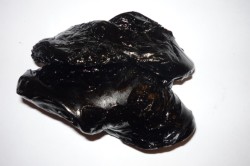 If a person has problems with the musculoskeletal system, this indicates a disruption of the endocrine glands. To correct the situation, you need to change the usual lifestyle that led to the disease. First of all, you should give up smoking and alcohol, because... These habits significantly undermine human health.
If a person has problems with the musculoskeletal system, this indicates a disruption of the endocrine glands. To correct the situation, you need to change the usual lifestyle that led to the disease. First of all, you should give up smoking and alcohol, because... These habits significantly undermine human health.
Then you need to pay attention to nutrition. Food is an energetically valuable raw material from which the body extracts the components it needs for the functioning of the endocrine system.
Lack of nutrients leads to an imbalance of the internal secretion organs, this main reason diseases musculoskeletal system. A lack of calcium leads to brittle bones and fractures, and various infections lead to the development of arthritis that destroys joints.
For diseases of the musculoskeletal system, you need to consume large quantities of sorrel, lemon, wild garlic and garlic. Apples and plums for joint diseases will speed up the healing process. Cranberry, lingonberry and raspberry juice are useful for rheumatoid arthritis.
For joint health and stimulation of internal secretion organs, it is recommended to add oil to food walnut. Small portions of this oil, rich in vitamins, iodine, essential compounds and amino acids, have a good effect on the body and promote rapid recovery after illness.
Shilajit is traditionally used to treat the musculoskeletal system. The amino acids it contains stimulate the restoration of damaged skeletal bones and accelerate regeneration processes.
Royal jelly is a beekeeping product similar in its characteristics to mumiyo. It is very useful in reducing the body's protective functions.
Foot disease requires wearing the right shoes with low heels and orthopedic soles. If you are not ready to give up regular shoes, then it is recommended to use special insoles that support the arch of the foot.
If you have pain in the heel area, you need to give up active sports and heavy lifting until stable remission occurs. Following these recommendations will help relieve heel pain.
Return to contents
Using medicinal baths and compresses
Treatment with folk remedies involves the use of ointments homemade, compresses, baths that are used externally.
If the pain is due to a heel spur, then salt baths can help. To use them you need sea water or sea salt. If you warm your feet in salt water every day, doing this for several months, then you can.
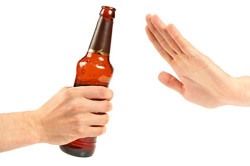 For compresses for heel pain due to arthritis, you can use steamed budra ivy grass, chamomile flowers or burdock leaves. The raw material is applied overnight to the sore spot in a thick layer, covered with compressor paper and insulated with a bandage.
For compresses for heel pain due to arthritis, you can use steamed budra ivy grass, chamomile flowers or burdock leaves. The raw material is applied overnight to the sore spot in a thick layer, covered with compressor paper and insulated with a bandage.
Wormwood is a traditional remedy for treating sore feet. It is used in compresses as a pain reliever for arthritis, sprains, dislocations, and bruises. To prepare an infusion for compresses, you will need a tablespoon of crushed raw materials and a glass of boiling water. The herb is infused for three hours and then used for its intended purpose.
If your heel hurts after a bruise, you can use flax seeds. The ground seeds are poured into two linen bags. They are dipped one by one in boiling water and applied to the sore spot. You can use dry, highly heated flax seeds.
Warming the feet in an infusion of the mixture helps relieve pain medicinal herbs or hay dust.
Return to contents
Preparation of medicinal oils, ointments and alcohol tinctures
Essential oils, ointments and alcohol tinctures are extracts of medicinal extracts that can quickly cure heels that hurt due to muscle tension. They can relieve foot pain for a while, so they are used in moments of acute pain.
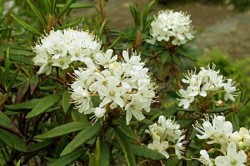 Laurel laurel oil is used for rubbing for pain in the heel and foot. Essential oils, which are found in large quantities in laurel, actively affect tumors from bruises and promote recovery.
Laurel laurel oil is used for rubbing for pain in the heel and foot. Essential oils, which are found in large quantities in laurel, actively affect tumors from bruises and promote recovery.
Prepare it at home like this:
- 30 grams of chopped bay leaf;
- 1 cup hot vegetable oil.
The ingredients are mixed and left in a dark place for a week. Afterwards it is filtered and used to lubricate sore spots. The same method can be used to prepare an oil infusion of fragrant violet. It will help heal stretched tendons.
Eucalyptus essential oil, purchased at a pharmacy, is used to rub sore spots on the feet. It will help relieve heel pain, because it has a distracting effect on neuralgic pain.
To treat bruises and injuries, you can use an ointment made from wild rosemary. To prepare it, fresh herbs, washed and dried, are passed through a meat grinder to obtain 20 ml of plant juice. The resulting mass is squeezed out and the juice is mixed with 40 grams butter or lanolin. Then 40 grams of Vaseline are added to this mixture in parts and everything is thoroughly mixed. The finished dosage form is kept in the refrigerator and used to lubricate the feet after baths.
You can add 1 ml of alcohol tincture to the juice hot pepper, peppermint, elecampane roots or licorice roots. This will enhance medicinal properties ready-made product.
To prepare an alcohol tincture from these plants, you need to fill a glass container 2/3 full with raw materials and fill it with 70% alcohol. The jar needs to be placed in a dark place for two weeks. Strain the resulting infusion and use for its intended purpose.

